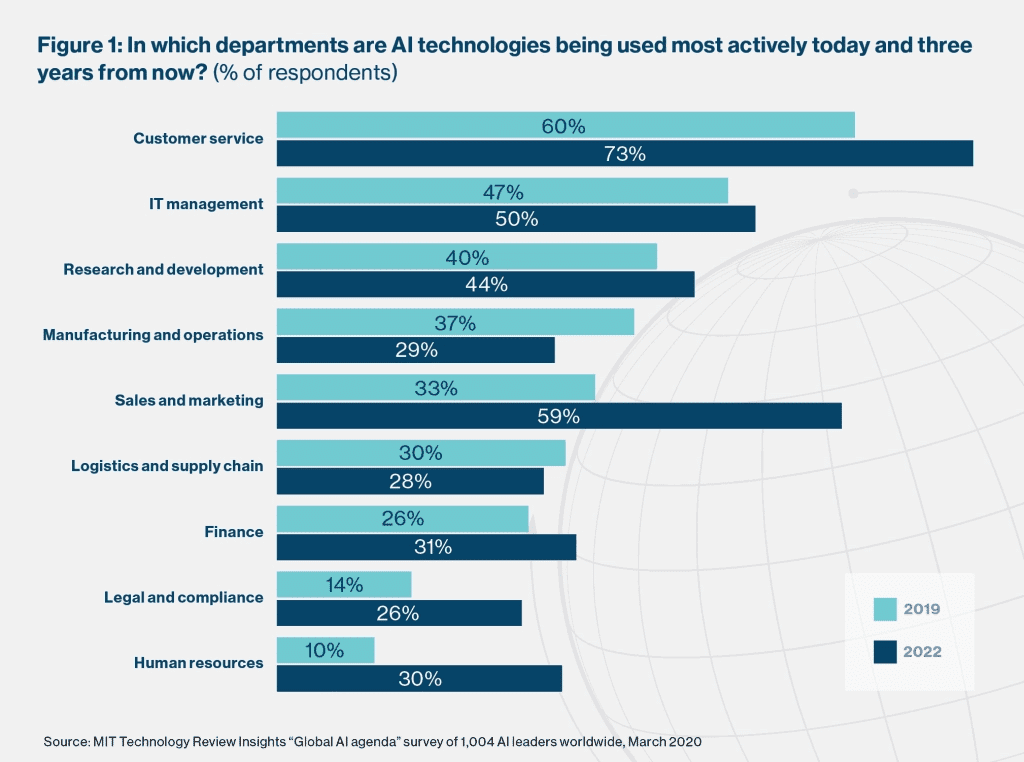Artificial Intelligence is definitely not a new concept, especially in the digital age. Virtual assistants such as Siri and Alexa have become a staple in most households; digital marketing relies heavily on machine learning and the data AI can help it gather and segment. Not to mention the landscape of customer service and customer support that has changed dramatically due to AI.

(Source)
The above statistic shows just how important AI is going to be in the coming years. The change is already visible, especially since the first point of contact and the first line of support for many brands and services is a chatbot.
And sure, chatbots are a very handy tool that can help out in many areas, saving customer support, customer service, or even sales teams the time and resources they’d otherwise consume dealing with every single query. But what happens when they’re just not programmed correctly?
Let’s see some of the most common chatbot fails and what your brand can learn from them.
You Just Gathered Data
And that was pretty much it. Using a chatbot just to gather data for your marketing efforts – especially when it comes to more personal marketing tactics, like email marketing – without making the experience more fun and interactive for the prospect can be deadly. Let me tell you why.
Generally speaking, email marketing has one of the best – if not the best – ROIs out there, especially when a brand delivers tailor-made content that can assess a customers’ pain points according to their place on the sales funnel. So, let’s assume you want to get started with email marketing.
To create an email campaign that will resonate and “speak” to your audience, you’ll need to map the customer’s journey according to the data you’ve gathered. Meaning, you’ll need to go beyond the segmentation basics. And chatbots are fantastic assistants when it comes to collecting data that go a little more in-depth. With a bit of tweaking here and programming there, they can help you segment and qualify your leads beyond the main stages.
You see, if created correctly, chatbots give prospects the impression they’re having a simple conversation with an individual. This means that they’ll be more eager to answer questions and less likely to grow weary of the process. Therefore, chatbots can fish out all of the information you need in order to understand your prospect’s customer journey and create content or even automated sequences that will be timely and relevant.
That is to say, only if you’re interested in interacting with the prospects. Don’t make this feel like the chatbot is programmed to ask a specific set of questions or that you’re working with canned answers alone. It’s much more likely for prospects to ditch a questionnaire – don’t make the chatbot feel like one and miss out on the right way of collecting data that go beyond the prospect’s name, date of birth, or marital status.
You Thought It’s Just a Bot
Have you ever wondered why everyone is obsessed with asking Siri absurd questions? It’s not just because it’s got all the answers. Mainly, it’s because it’s fun and engaging.
Overlooking your chatbot’s personality traits is a pretty big fail that most brands think of when it’s already too late. When you’re building a chatbot, you’re creating a person – or, at least, you want the interaction to feel that way. Therefore, you want it to have a personality that will entice the user to interact with your chatbot a second or a third time.
Make sure that you create a chatbot with specific personality traits. To do that, you will need to study your personas very well and develop the one that would have the best conversation with your potential customers – kind of like hiring one customer support agent for each one of your prospects.
Your chatbot needs to be witty and helpful enough to keep the user happy. It also needs to have the type of personality that can be as versatile as you need it to be, to help with all kinds of problems and not allow the user to take over.
Failing To Understand
The main problem with human interaction is that it can have infinite ways to be expressed. As humans, we’re not sure where our interlocutor is going to lead the conversation, and we don’t rely on verbal cues alone to understand that.
This is why it’s so difficult to program a chatbot in a way that will look and feel like a live chat interaction. Of course, there is no way to avoid the “I didn’t quite catch that” message, but that is true of any live interaction as well. The problem is not creating a chatbot that won’t understand the user.
The problem lies in creating a chatbot stuck in an infinite loop that will have the user going around in circles. The best thing you can do is study the ways your users interact with your chatbots and any pre-existing conversations that can reveal a pattern.
When does this pattern start becoming “loopy”? Where is the point of no return for the chatbot? What can you do when the chatbot reaches that point?
The answers are pretty simple: Give an actual “live chat” option when things get rough. Always give the prospect the option to transfer the conversation to an agent. Whether your chatbot gets stuck or not, your customers need to have that option available.
However, this does not mean that you need to bombard them with options – otherwise, you run the risk of your prospects getting frustrated and opting out.
Take the one-on-one approach: One alternative option for each case. An answer to a question along with a link to your FAQ page, for example. An “I didn’t quite catch that” with your customer support email. Anything that will make the transition smoother for the customer.
This will result in a better customer experience in the end.
The Takeaway
Chatbots are turning into a staple in the way brands do customer service and engage new prospects, mainly because AI is extremely useful when it comes to picking up data. The sheer volume of data a chatbot can gather can prove to be a real goldmine for all teams in a business – from marketing and customer service to the operations department.
Another great benefit is that chatbots can potentially provide customer service that won’t differ from what their human counterparts can provide, allowing teams to deal with more complex and time-consuming problems.


